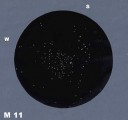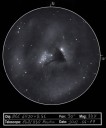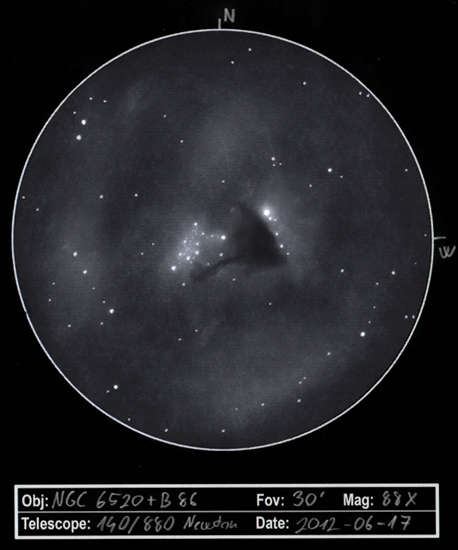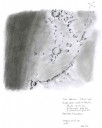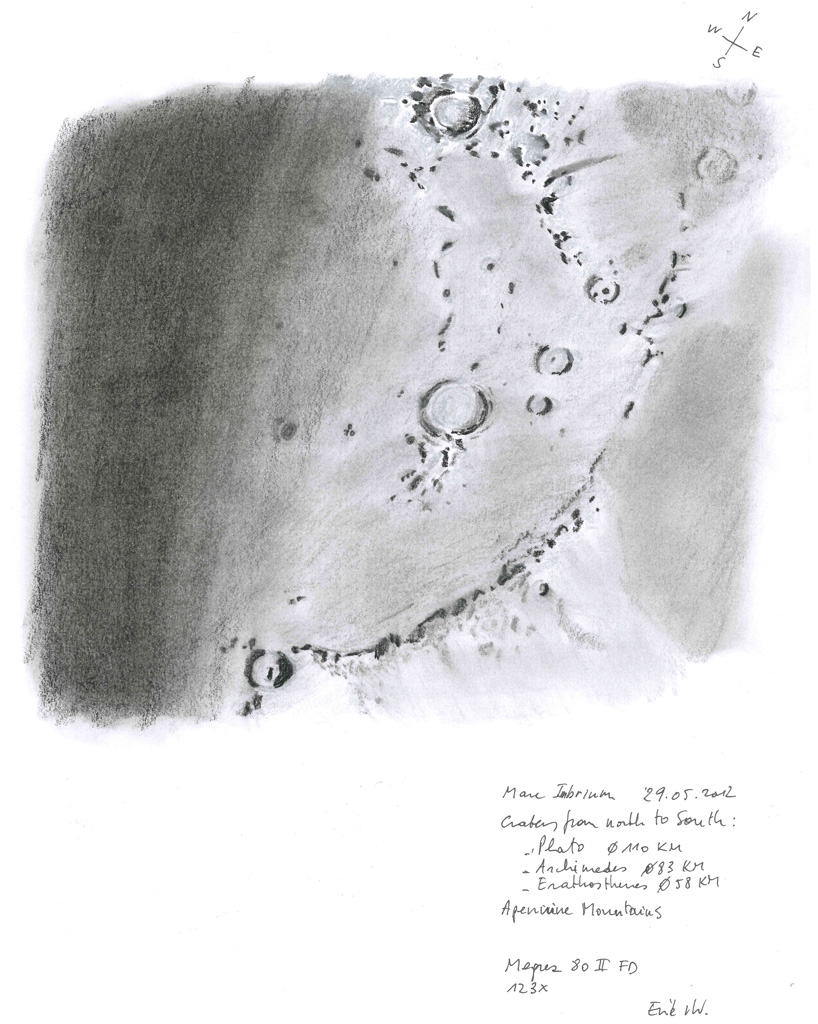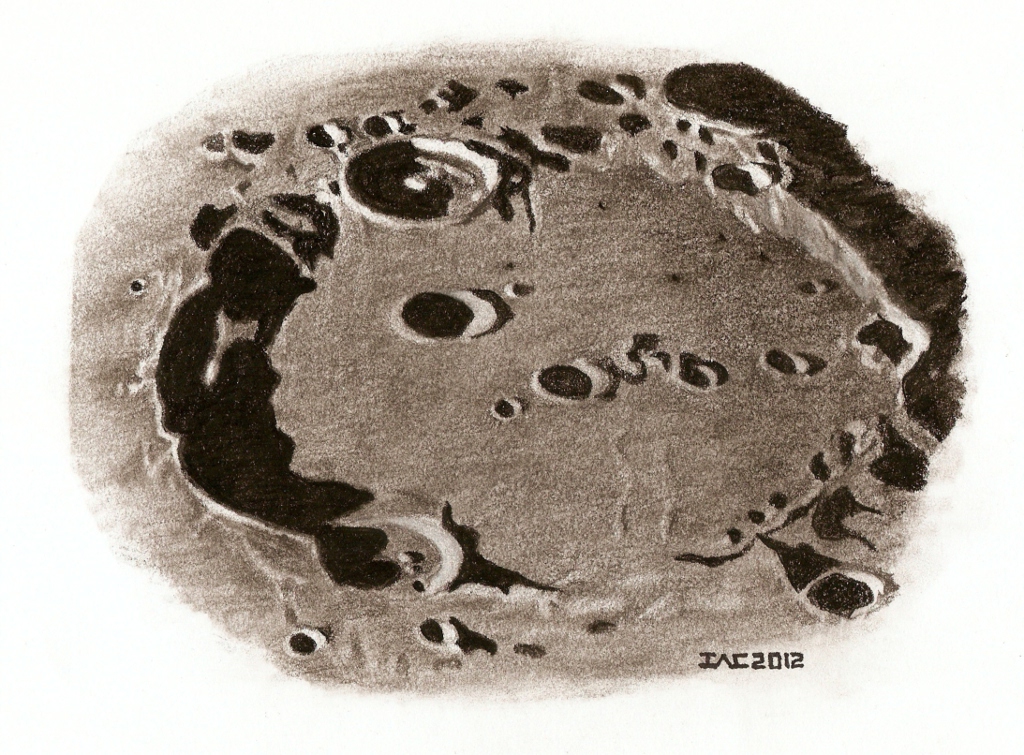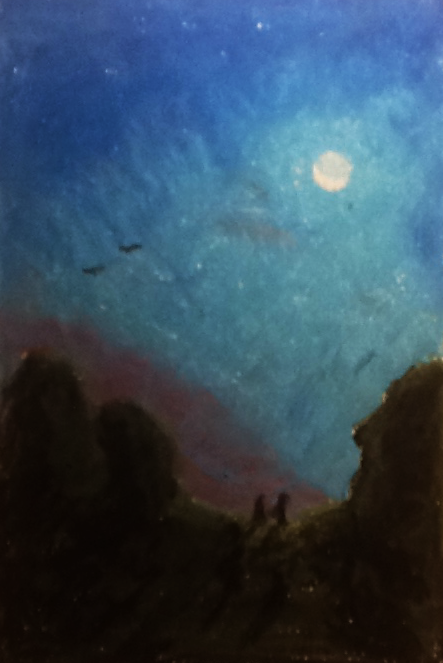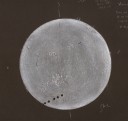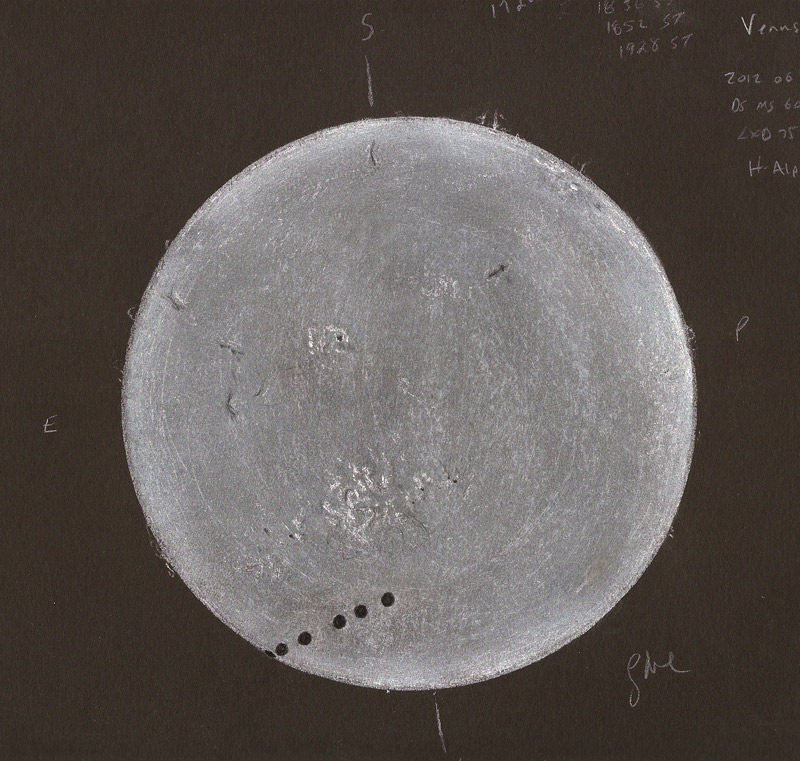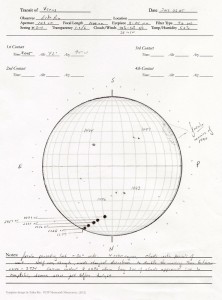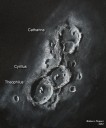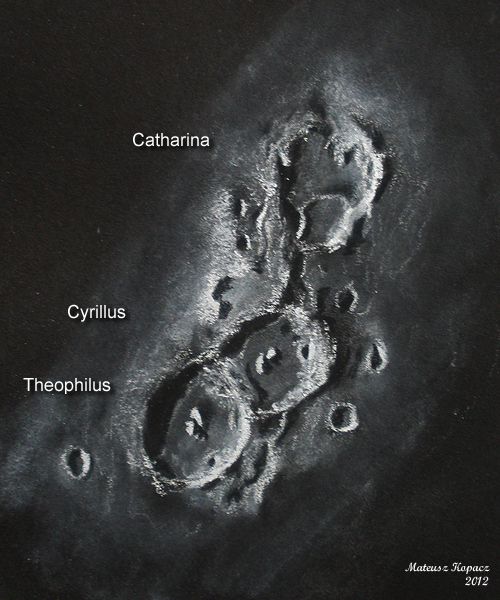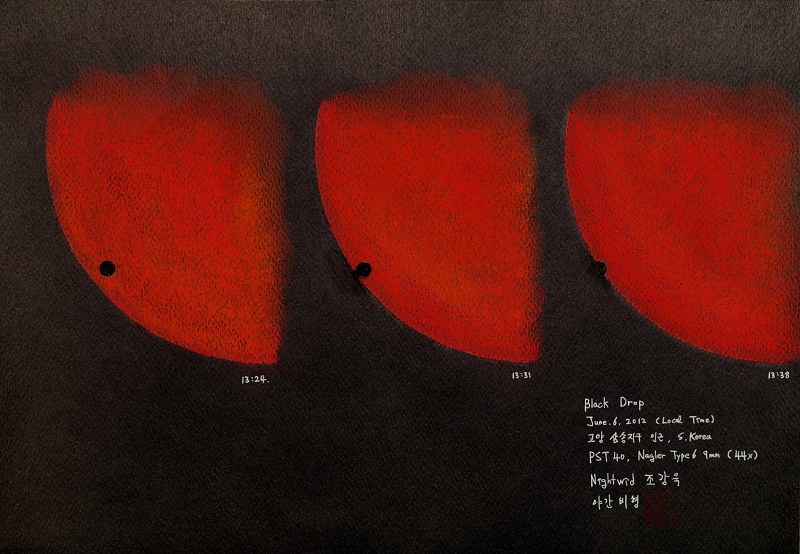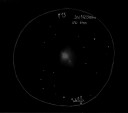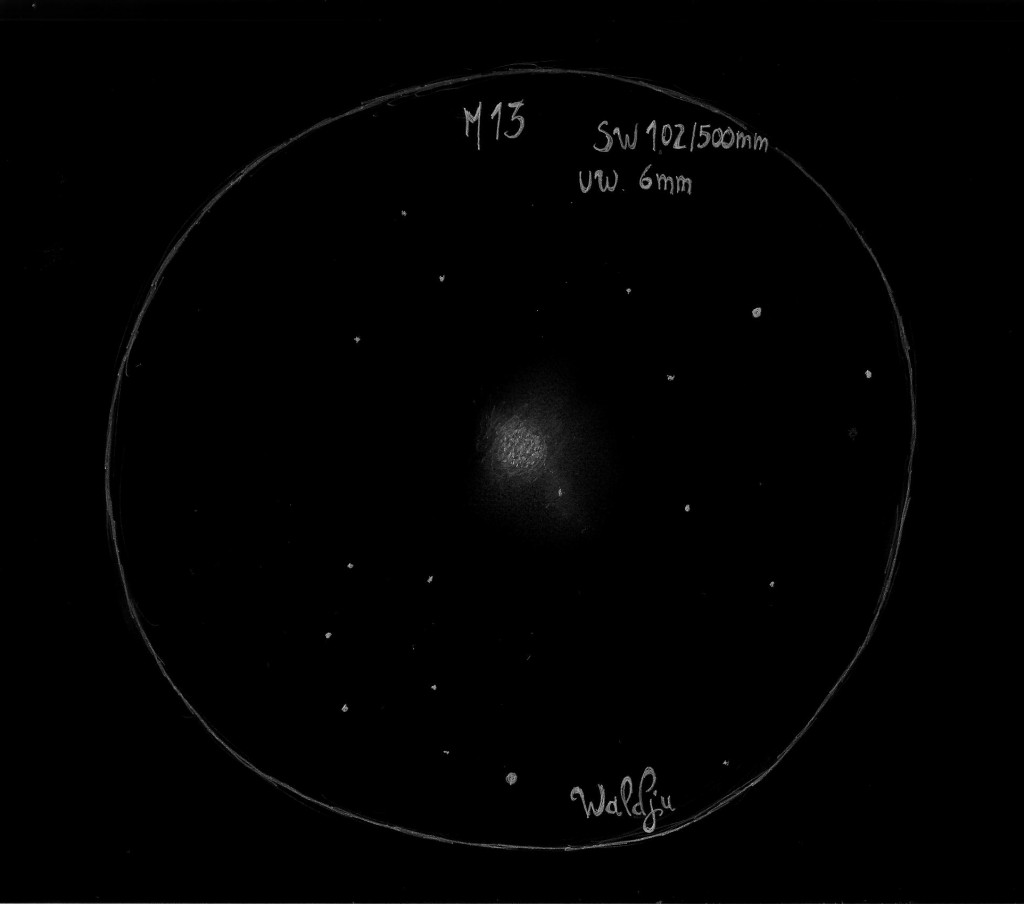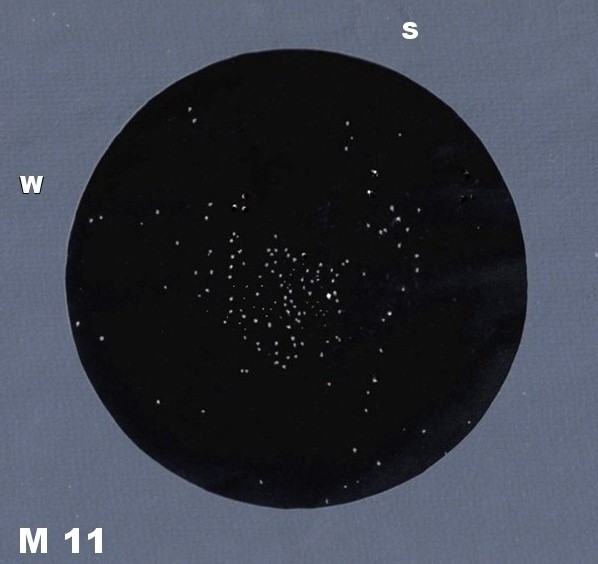
Although my backyard observing spot shows no hint of the Milky Way on the best nights, if the skies are transparent and steady I have respectable views of many deep sky targets.
On this night I decided to sketch one of them high in the southern sky.
M 11 is a rich open or galactic cluster in the northern sky on a good summer night. Some 500 stars of this cluster’s 2900 are brighter than 14th magnitude and it glows at magnitude is 6.3. Many suns here are very hot B class and densely packed from our perspective. Faint members scintillate in the ocular as your eye adjusts to them. This open cluster was discovered by Gottfried Kirch in 1681 and resolved into individual stars in 1733 by William Derham. At 6000 light years it is about half the distance of the nearest globular clusters and just as splendid.
Sketching:
9″x11″ white sketching paper; 6B, 4B, HB graphite pencils and a blending stump;
Scanned and inverted
Scope: 10″ f/5.7 Dobsonian: 13 mm widefield eyepiece 111x
Date and Time: 6-18-2012, 06:00-06:50 UT
Seeing: Pickering 8/10
Transparency: above average 3.5/5
Location: Constellation: Scutum
R.A. 18h 51.1m
Dec. -06° 16′
Frank McCabe
